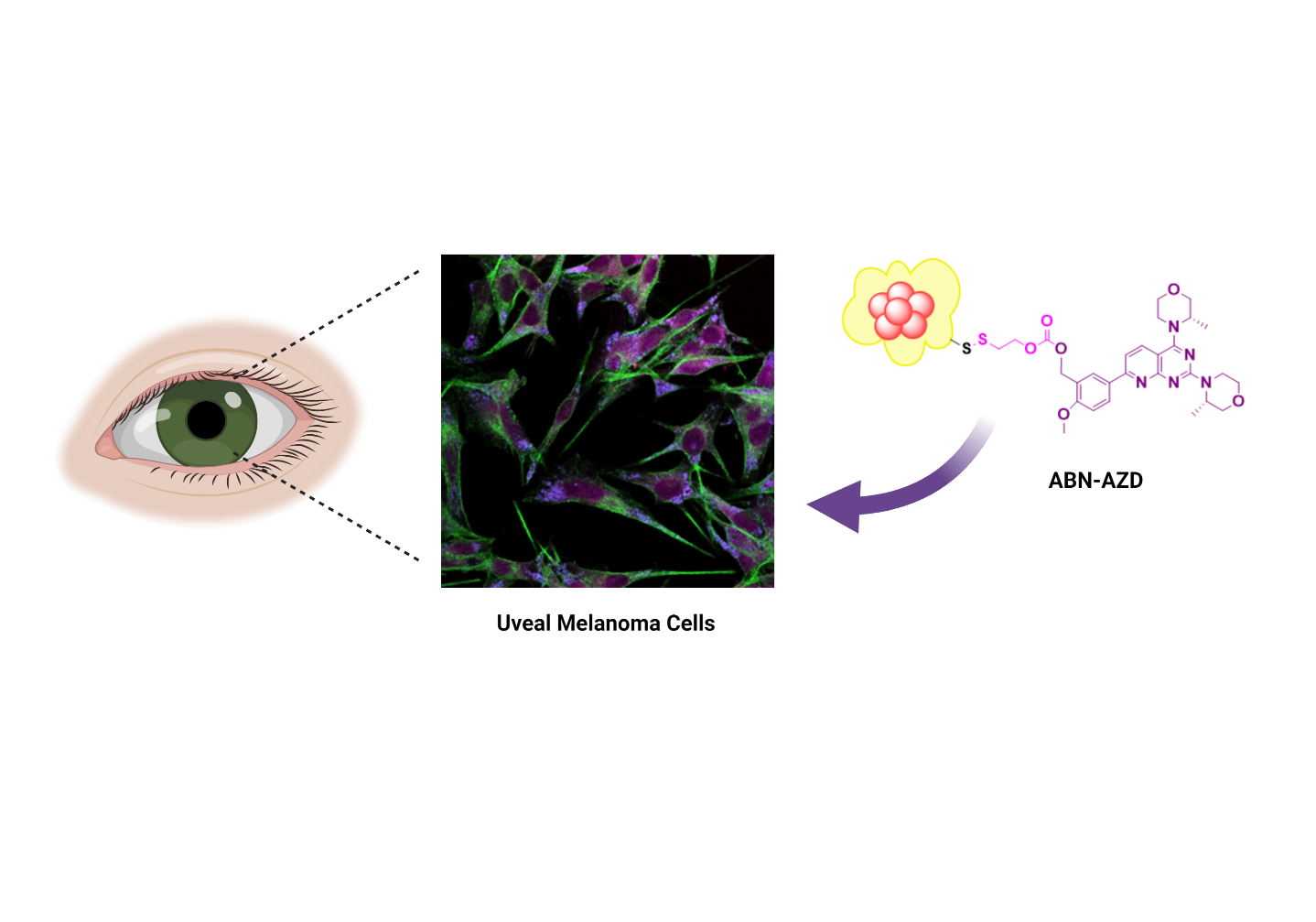Smart nanoparticles to fight the most aggressive cancer of the eye
16.04.2021
Researchers at IMDEA Nanociencia develop a nanomedicine to treat with high selectivity a rare ocular cancer.
 Uveal melanoma is the most common primary malignancy of the eye in adults. In general, this tumor is very aggressive and challenging to detect. Although at the time of diagnosis, there is no evidence of metastasis in the majority of patients, approximately 50% of them finally develop metastasis following the initial diagnosis, and 90% of them affect the liver. Once the first metastasis is detected, the average survival of the patient is less than one year, even after the administration of treatments. There are different treatments for local uveal melanoma tumors, such as radiotherapy, laser therapy, clinical resection, or even enucleation. However, there is no effective treatment for metastatic uveal melanoma that has a significant effect on overall patient survival at the moment.
Uveal melanoma is the most common primary malignancy of the eye in adults. In general, this tumor is very aggressive and challenging to detect. Although at the time of diagnosis, there is no evidence of metastasis in the majority of patients, approximately 50% of them finally develop metastasis following the initial diagnosis, and 90% of them affect the liver. Once the first metastasis is detected, the average survival of the patient is less than one year, even after the administration of treatments. There are different treatments for local uveal melanoma tumors, such as radiotherapy, laser therapy, clinical resection, or even enucleation. However, there is no effective treatment for metastatic uveal melanoma that has a significant effect on overall patient survival at the moment.
In this regard, scientists are trying to improve the efficacy and specificity of chemotherapy using vehicles to deliver the drugs. Those based on gold nanostructures are excellent candidates for this objective because of their exceptional stability, absence of toxicity and ease of modification with several chemical agents. Furthermore, some gold nanostructures, such as nanoclusters, are fluorescent, allowing their use simultaneously for treatment and imaging purposes.
The group of NanoBiotechnology at IMDEA Nanociencia, led by Prof. Álvaro Somoza, has used gold nanoclusters coated with albumin to conjugate the drug AZD8055. This is a potent selective inhibitor of mTOR (mTORC1-mTORC2) that prevents the proliferation and survival of tumoral cells. The modified nanostructures were tested in vitro against different uveal melanoma cancer cells and non-tumoral keratinocytes, where the release of chemotherapeutics took place in a controlled manner. Interestingly, while free AZD8055 reduces viability in non-tumor keratinocyte cells, functionalized nanostructures have no effect compared to untreated cells, highlighting the selectivity of the treatment. What is more, the system presented excellent antitumor activity in in vivo, decreasing the tumor surface of mice models compared to the free AZD8055. Remarkably, the results obtained were achieved employing a dose 23 times lower than those used in previous reports, thus confirming its promising nanotherapeutic potential for metastatic uveal melanoma.
This is the first therapeutic approach for uveal melanoma based on the combination of nanostructures and the AZD8055, with excellent antitumoral activity in uveal melanoma models. “Our system could be an excellent solution to overcome the high toxicity and non-selective biodistribution conventional therapies”, Somoza says.
This work is a collaboration between research groups at IMDEA Nanociencia, and Instituto Aragonés de Ciencias de la Salud (IACS/ IIS Aragón). It has been partially funded by the Spanish Ministry for Science, Innovation and Universities, the Spanish Association Against Cancer (AECC) and the Centre of Excellence Severo Ochoa recognition to IMDEA Nanociencia (2017-2021).
Reference:
A. Latorre, et al. Albumin-based nanostructures for uveal melanoma treatment. Nanomedicine: Nanotechnology, Biology and Medicine, 3 (2021).
DOI: 10.1016/j.nano.2021.102391
Contact
Dr. Álvaro Somoza
alvaro.somoza [at]imdea.org
http://nanociencia.imdea.org/nanobiotechnology/group-home
Twitter: @alvarosomoza
Oficina de Comunicación Científica de IMDEA Nanociencia
This email address is being protected from spambots. You need JavaScript enabled to view it.
91 299 87 00
Twitter: @imdea_nano
Facebook: @imdeananociencia
Instagram: @imdeananociencia
Source: IMDEA Nanociencia




